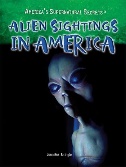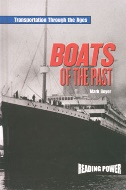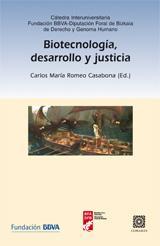- Ver carrito No puedes añadir esa cantidad al carrito — tenemos 1 existencias y has añadido 1 en tu carrito.
-
 Las tormentas son un tema fascinante y una excelente manera de crear interés en la ciencia. Esta serie utiliza fotos dramáticas a todo color para captar la atención de los estudiantes y el auténtico idioma español. Cada libro explica un tipo de tormenta: cómo se ve, cómo se forma, el daño que puede causar y cómo las personas pueden protegerse del peligro. Las características de la serie.
Las tormentas son un tema fascinante y una excelente manera de crear interés en la ciencia. Esta serie utiliza fotos dramáticas a todo color para captar la atención de los estudiantes y el auténtico idioma español. Cada libro explica un tipo de tormenta: cómo se ve, cómo se forma, el daño que puede causar y cómo las personas pueden protegerse del peligro. Las características de la serie. -
 ¡Imagínese viajar a la mitad de la velocidad de un avión sin abandonar el suelo! Los estudiantes descubrirán la tecnología que hace posible tales velocidades, desde pistas especiales y precauciones de seguridad hasta trenes diseñados aerodinámicamente. ¿Cuáles son los límites de la velocidad de los trenes? ¿Qué impone esos límites? Los estudiantes también leerán sobre el futuro del viaje en tren de pasajeros, desde trenes voladores hasta trenes que usan imanes enormes para levitar pulgadas o centímetros de la vía. ¡Algunos trenes alcanzan con seguridad velocidades de más de 200 mph!
¡Imagínese viajar a la mitad de la velocidad de un avión sin abandonar el suelo! Los estudiantes descubrirán la tecnología que hace posible tales velocidades, desde pistas especiales y precauciones de seguridad hasta trenes diseñados aerodinámicamente. ¿Cuáles son los límites de la velocidad de los trenes? ¿Qué impone esos límites? Los estudiantes también leerán sobre el futuro del viaje en tren de pasajeros, desde trenes voladores hasta trenes que usan imanes enormes para levitar pulgadas o centímetros de la vía. ¡Algunos trenes alcanzan con seguridad velocidades de más de 200 mph! -
 Aircraft carriers are truly the fortresses of the sea! Students will get an inside-out view of these incredible floating cities, from how they are constructed to how they function as important parts of a country's defense. Students also will learn about the various aircraft that are on board and the crew that keeps aircraft carriers in ship shape!
Aircraft carriers are truly the fortresses of the sea! Students will get an inside-out view of these incredible floating cities, from how they are constructed to how they function as important parts of a country's defense. Students also will learn about the various aircraft that are on board and the crew that keeps aircraft carriers in ship shape! -
 In 1878 in Denison, Texas, a man named John Martin looked up into the sky and saw something he could not explain. Americans have been hooked on the possibility of beings from space visiting Earth ever since. A sense of wonder, and reality, are brought to some popular legends of alien encounters and sightings in this volume. The final chapter explores how these legends have become even more popular thanks to movies, television, and literature.
In 1878 in Denison, Texas, a man named John Martin looked up into the sky and saw something he could not explain. Americans have been hooked on the possibility of beings from space visiting Earth ever since. A sense of wonder, and reality, are brought to some popular legends of alien encounters and sightings in this volume. The final chapter explores how these legends have become even more popular thanks to movies, television, and literature. -
 Because of the biological similarities between many animals and humans, scientists can learn about diseases, and find out how humans might react to medicines, cosmetics, chemicals, and other products by testing them on animals first. According to the Humane Society of the United States, more than twenty-five million animals are used in research, testing, and education each year. Readers learn about the various philosophies on animal testing, what tests are used, and how they are performed. The book presents the pros and cons of animal testing and some of the alternative methods to animal testing that scientists are developing today.
Because of the biological similarities between many animals and humans, scientists can learn about diseases, and find out how humans might react to medicines, cosmetics, chemicals, and other products by testing them on animals first. According to the Humane Society of the United States, more than twenty-five million animals are used in research, testing, and education each year. Readers learn about the various philosophies on animal testing, what tests are used, and how they are performed. The book presents the pros and cons of animal testing and some of the alternative methods to animal testing that scientists are developing today. -
 Artificial Intelligence is one of the most intriguing and difficult technological advances ever explored by man. It is the study of intelligent behavior and the attempt to recreate it through technology. This beginner's guide explores, not only the technology behind AI, but the current and future benefits of further exploration.
Artificial Intelligence is one of the most intriguing and difficult technological advances ever explored by man. It is the study of intelligent behavior and the attempt to recreate it through technology. This beginner's guide explores, not only the technology behind AI, but the current and future benefits of further exploration. -
 As the world's population expands, so too does the risk of communicable disease and global pandemics. Consequently, healthcare has assumed a greater centrality in the public consciousness both in the United States and around the world. With various national and international organizations dedicated to epidemiological research and disease control, societal welfare has become an increasingly significant aspect of public policy. The historical, legal, and scientific factors that form the basis of public health locally and globally are the subjects of this relevant and revealing volume.
As the world's population expands, so too does the risk of communicable disease and global pandemics. Consequently, healthcare has assumed a greater centrality in the public consciousness both in the United States and around the world. With various national and international organizations dedicated to epidemiological research and disease control, societal welfare has become an increasingly significant aspect of public policy. The historical, legal, and scientific factors that form the basis of public health locally and globally are the subjects of this relevant and revealing volume. -
 The detailed illustrations and photographs in this fascinating book take us into the complicated, hectic world of the beehive, where we observe the rigidly structured "class system" of the honeybee, with its worker bees, drones, and queen. The complex body and internal systems of the bee are examined, as the history, honey production, construction of the honeycomb, reproduction, and colony building are discussed.
The detailed illustrations and photographs in this fascinating book take us into the complicated, hectic world of the beehive, where we observe the rigidly structured "class system" of the honeybee, with its worker bees, drones, and queen. The complex body and internal systems of the bee are examined, as the history, honey production, construction of the honeycomb, reproduction, and colony building are discussed. -
Sin stock
 Luis loves to read, but soon his house in Colombia is so full of books there's barely room for the family. What to do? Then he comes up with the perfect solution: a traveling library! He buys two donkeys, Alfa and Beto, and travels with them throughout the land, bringing books and reading to the children in faraway villages. Beautiful!
Luis loves to read, but soon his house in Colombia is so full of books there's barely room for the family. What to do? Then he comes up with the perfect solution: a traveling library! He buys two donkeys, Alfa and Beto, and travels with them throughout the land, bringing books and reading to the children in faraway villages. Beautiful! -
 Imagine traveling at half the speed of a jet plane without ever leaving the ground! Students will discover the technology that makes such speeds possible, from special tracks and safety precautions to aerodynamically designed trains. What are the limits to the speed of trains? What imposes those limits? Students also will read about the future of passenger train travel, from flying trains to trains that use huge magnets to levitate inches or centimeters off the track. Some trains safely reach speeds of more than 200 mph!
Imagine traveling at half the speed of a jet plane without ever leaving the ground! Students will discover the technology that makes such speeds possible, from special tracks and safety precautions to aerodynamically designed trains. What are the limits to the speed of trains? What imposes those limits? Students also will read about the future of passenger train travel, from flying trains to trains that use huge magnets to levitate inches or centimeters off the track. Some trains safely reach speeds of more than 200 mph! -
 The spread of harmful chemicals and biological organisms can injure and kill thousands of people and make an infected area unlivable for some time to come. In the age of modern terrorism, many people fear militant organizations will unleash chemical and biological weapons in public places. This book provides readers with an overview of what these weapons are, who uses them and why, and explains how much of a threat they are to our way of life. Over time, countries have pledged to ban the use of CBWs in various agreements, with limited success.
The spread of harmful chemicals and biological organisms can injure and kill thousands of people and make an infected area unlivable for some time to come. In the age of modern terrorism, many people fear militant organizations will unleash chemical and biological weapons in public places. This book provides readers with an overview of what these weapons are, who uses them and why, and explains how much of a threat they are to our way of life. Over time, countries have pledged to ban the use of CBWs in various agreements, with limited success. -
 Chemistry is often a daunting subject for students, fostering a bewilderment that sets in upon their first encounter with the Periodic Table. This book demystifies an important aspect of the subject--chemical reactions--and demonstrates exactly how fascinating and fun chemistry can be. Starting out by explaining just what a chemical reaction is--and what it isn't--the book details in accessible language the various kinds of chemical reactions that are possible. It draws upon readily comprehensible everyday examples, like rusting metal, baking bread, battery power, digestion, rotting eggs, and burning candles. The book then turns to a survey of the history of chemical research, beginning in the Ancient and Classical Worlds, progressing to the Medieval alchemists and Renaissance innovators, and ending with the leading lights of modern chemistry. Readers will be introduced to luminaries such as Antoine Lavoisier, John Dalton, Louis Pasteur, Dmitri Mendeleyev, the Curies, and Ernest Rutherford. It concludes with an inspiring examination of how current research and cutting edge developments are using chemistry and chemical reactions to save lives and insure continued life on Earth. This book amply illustrates the accessibility, relevance, and gee-whiz fun of chemical reactions.
Chemistry is often a daunting subject for students, fostering a bewilderment that sets in upon their first encounter with the Periodic Table. This book demystifies an important aspect of the subject--chemical reactions--and demonstrates exactly how fascinating and fun chemistry can be. Starting out by explaining just what a chemical reaction is--and what it isn't--the book details in accessible language the various kinds of chemical reactions that are possible. It draws upon readily comprehensible everyday examples, like rusting metal, baking bread, battery power, digestion, rotting eggs, and burning candles. The book then turns to a survey of the history of chemical research, beginning in the Ancient and Classical Worlds, progressing to the Medieval alchemists and Renaissance innovators, and ending with the leading lights of modern chemistry. Readers will be introduced to luminaries such as Antoine Lavoisier, John Dalton, Louis Pasteur, Dmitri Mendeleyev, the Curies, and Ernest Rutherford. It concludes with an inspiring examination of how current research and cutting edge developments are using chemistry and chemical reactions to save lives and insure continued life on Earth. This book amply illustrates the accessibility, relevance, and gee-whiz fun of chemical reactions. -
 This is a well-organized look as coastal regions: what shapes them, some environmental threats, and their usefulness in industry and tourism. Several beautiful and interesting coastlines are highlighted, including Cancun and the Great Barrier Reef. Readers will learn about each coastline's location, population, local industries, and environmental threats.
This is a well-organized look as coastal regions: what shapes them, some environmental threats, and their usefulness in industry and tourism. Several beautiful and interesting coastlines are highlighted, including Cancun and the Great Barrier Reef. Readers will learn about each coastline's location, population, local industries, and environmental threats.



























